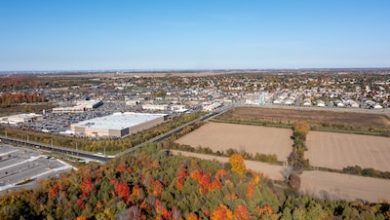
Are you considering a career as a LinkedIn applications developer? Maybe you’re already in the field and looking to increase your salary. Whatever your situation, understanding the factors that affect LinkedIn applications developer salaries is crucial. From the demand for professionals in this role to negotiation tips for a higher salary, we’ll explore everything you need to know to maximize your earning potential in this competitive field. Whether you’re an entry-level developer or an experienced professional, this comprehensive guide will provide insights into the industry and sector trends, potential career growth, and tips for increasing your LinkedIn applications developer salary.
Contents
- 1 Demand For Linkedin Applications Developers
- 2 Factors Affecting Linkedin Applications Developer Salaries
- 3 Experience Level And Salary Expectations
- 4 Salary Ranges For Entry-Level Linkedin Applications Developers
- 5 How To Negotiate A Higher Salary As A Linkedin Applications Developer
- 6 Certifications And Their Impact On Linkedin Applications Developer Salaries
- 7 The Impact Of Location On Linkedin Applications Developer Salaries
- 8 Is A Higher Education Degree Necessary For A Higher Salary?
- 9 Benefits And Perks That Affect Linkedin Applications Developer Salaries
- 10 Industry And Sector Trends In Linkedin Applications Developer Salaries
- 11 Potential Career Growth And Salary Prospects For Linkedin Applications Developers
- 12 Tips For Maximizing Your Linkedin Applications Developer Salary
- 13 Frequently Asked Questions
Demand For Linkedin Applications Developers
As technology continues to advance and the need for digital solutions grows, the demand for LinkedIn applications developers is on the rise. LinkedIn, the professional networking platform, has become an essential tool for businesses and individuals, and the need for skilled developers to create and maintain applications for the platform has never been greater.
With the increase in remote work and online networking, the demand for LinkedIn applications developers has surged. Companies are looking for developers who can create innovative applications to help their businesses stand out on the platform, connect with potential clients, and improve their overall online presence.
As the demand for LinkedIn applications developers continues to grow, so does the need for individuals with the skills and expertise to meet these demands. Developers who possess a strong understanding of the LinkedIn platform, as well as experience in application development and programming languages, are in high demand and can command competitive salaries in today’s job market.
Factors Affecting Linkedin Applications Developer Salaries
Factors Affecting Linkedin Applications Developer Salaries
There are a number of factors that can influence the salary of a LinkedIn Applications Developer. These factors can range from experience level, education, location, industry trends, and even certifications. Understanding the various elements that can impact your salary as a LinkedIn Applications Developer is crucial for maximizing your earning potential and negotiating a higher salary.
One major factor that can impact the salary of a LinkedIn Applications Developer is their experience level. Entry-level developers can expect to earn significantly less than those with several years of experience in the field. As a developer gains more experience and expertise, they become more valuable to employers and can demand a higher salary. Additionally, developers with a proven track record of successful projects and a strong portfolio may be able to negotiate a higher salary.
Location is another important factor that can affect the salary of a LinkedIn Applications Developer. Developers working in major tech hubs such as San Francisco or New York City typically earn higher salaries than those working in smaller cities or rural areas. The cost of living in a particular location can also impact salary expectations, with developers in expensive cities often commanding higher salaries to compensate for the higher cost of living.
Experience Level And Salary Expectations
When it comes to pursuing a career as a LinkedIn Applications Developer, understanding the impact of your experience level on salary expectations is crucial. As with any profession, the amount of experience you bring to the table can have a significant influence on the potential salary you can command.
For entry-level LinkedIn Applications Developers, the salary range can vary depending on factors such as education, internships, and the specific technical skills possessed. According to industry sources, the average entry-level salary for this role hovers around **$65,000** per year, but this figure can be affected by the aforementioned factors.
As you gain more experience in the field, however, your salary expectations can increase significantly. Mid-level LinkedIn Applications Developers typically earn around **$85,000** per year, while those with more advanced experience and proven track records can command salaries upwards of **$100,000** annually.
Salary Ranges For Entry-Level Linkedin Applications Developers
When considering a career as an LinkedIn Applications Developer, it’s important to understand the salary ranges for entry-level positions. The salary for entry-level LinkedIn Applications Developers can vary based on a number of factors, including education, location, and industry demand.
Entry-level LinkedIn Applications Developers can typically expect to earn a salary ranging from $50,000 to $70,000 per year, depending on the factors mentioned above. This range may increase with additional experience, certifications, and specialized skills.
Location plays a significant role in determining salary ranges for entry-level LinkedIn Applications Developers. For example, those working in major tech hubs such as San Francisco or New York City may earn higher salaries due to the high demand for tech talent in these areas. On the other hand, developers working in smaller cities or rural areas may earn a lower salary.
How To Negotiate A Higher Salary As A Linkedin Applications Developer
As a LinkedIn Applications Developer, you may be wondering how to negotiate a higher salary in your position. It’s important to be well-informed and prepared when entering salary negotiations, as this can greatly affect your earning potential. Here are some tips to help you negotiate a higher salary:
Do Your Research: Before entering into salary negotiations, it’s important to have a clear understanding of the current market rates for LinkedIn Applications Developers. Research the average salaries for professionals in your area with similar experience and skills. This will give you a benchmark to work with when negotiating your salary.
Highlight Your Value: During the negotiation process, be sure to highlight the value you bring to the company. This could include specific projects you’ve worked on, your technical skills, and any other contributions you’ve made. Demonstrating your worth can help justify a higher salary.
Certifications And Their Impact On Linkedin Applications Developer Salaries
When it comes to career growth and salary prospects for LinkedIn Applications Developers, certifications can play a significant role. With the ongoing demand for skilled professionals in the tech industry, having the right certifications can impact the earning potential of a LinkedIn Applications Developer. Let’s explore the impact of certifications on LinkedIn Applications Developer salaries and how professionals can leverage certifications to negotiate for higher pay.
One of the key factors that affect LinkedIn Applications Developer salaries is the possession of relevant certifications. Certifications such as Microsoft Certified: Azure Solutions Architect or AWS Certified Developer can demonstrate a developer’s expertise in cloud platforms, which are in high demand in today’s technology landscape. These certifications can set a developer apart from others in the field and signal to employers that they have the necessary skills and knowledge to excel in their roles.
Furthermore, holding certifications not only showcases a LinkedIn Applications Developer’s expertise but also reflects their commitment to continuous learning and professional development. In a competitive job market, having certifications can give developers a competitive edge and increase their chances of landing higher-paying positions. Employers are often willing to pay a premium for professionals who have proven their skills through certifications.
The Impact Of Location On Linkedin Applications Developer Salaries
Location plays a significant role in determining the salary of a LinkedIn Applications Developer. As with many other professions, the cost of living in a particular area can greatly impact the compensation that professionals in this field can expect to receive. Companies based in high-cost areas such as San Francisco or New York City often offer higher salaries to match the increased living expenses. On the other hand, developers working in areas with a lower cost of living may receive a lower salary.
Additionally, the demand for LinkedIn Applications Developers can vary depending on the location. Certain cities or regions may have a higher concentration of tech companies or a growing startup scene, leading to increased demand for developers and potentially higher salaries. Alternatively, areas with a smaller tech industry may offer fewer opportunities and lower salary prospects.
In some cases, remote work opportunities may also impact the salary of a LinkedIn Applications Developer. With more companies embracing remote work options, professionals in this field may have the flexibility to work from locations with a lower cost of living while still receiving a competitive salary. This can lead to a higher standard of living for developers who choose to work remotely.
Is A Higher Education Degree Necessary For A Higher Salary?
In the tech industry, the question of whether a higher education degree is necessary for a higher salary is a hotly debated topic. With the rise of coding bootcamps and alternative education paths, many are questioning the value of a traditional college degree in the field of LinkedIn applications development. Let’s explore the factors at play when it comes to the impact of higher education on salary expectations for LinkedIn applications developers.
One of the main arguments in favor of a higher education degree is that it can provide a strong foundation in computer science principles and theory. This knowledge can be invaluable when it comes to tackling complex technical challenges and can also be attractive to employers in the industry. However, it’s important to note that many successful LinkedIn applications developers have been able to thrive in their careers without a traditional college degree.
When it comes to salary, having a higher education degree can sometimes lead to higher starting salaries and greater potential for career advancement. Certain companies may place a high value on a formal education and be willing to offer higher compensation to candidates with a degree. Additionally, a degree can open doors to opportunities for leadership and management roles within organizations.
Benefits And Perks That Affect Linkedin Applications Developer Salaries
When considering a career as a LinkedIn Applications Developer, it’s essential to take into account the various benefits and perks that can affect your salary. While the base salary is important, additional benefits and perks can significantly impact your overall compensation package. Understanding these factors can ensure that you are maximizing your earning potential and enjoying a well-rounded employment experience.
One of the perks that can heavily influence a LinkedIn Applications Developer’s salary is the option for remote work. With the increasing demand for flexible work arrangements, many companies are offering the opportunity to work from home or remotely. This perk can lead to increased job satisfaction and work-life balance, which can ultimately impact your salary expectations. If remote work is vital to your lifestyle, it’s essential to consider this perk when negotiating your compensation package.
Another factor that can affect a LinkedIn Applications Developer’s salary is the company’s benefits package. This can include healthcare benefits, retirement plans, paid time off, and professional development opportunities. These benefits can add significant value to your overall compensation and should be carefully considered when evaluating a job offer. Some companies also offer additional perks such as gym memberships, wellness programs, and transportation benefits, which can further enhance your employment experience.
Industry And Sector Trends In Linkedin Applications Developer Salaries
When it comes to the salary trends for LinkedIn Applications Developers, it is important to consider the industry and sector in which these professionals are working. The demand for LinkedIn Applications Developers is on the rise, but the salaries can vary greatly based on the industry and sector they are employed in.
In the technology industry, LinkedIn Applications Developers are often well-compensated due to the high demand for their skills. Companies in this sector are constantly seeking professionals who can develop and maintain applications for their LinkedIn presence, and are willing to pay top dollar for this talent.
On the other hand, in sectors such as non-profit organizations or government agencies, the salaries for LinkedIn Applications Developers may be lower due to budget constraints and different priorities. Therefore, it is important for professionals in this field to consider the industry and sector they are looking to work in when evaluating potential salary expectations.
Potential Career Growth And Salary Prospects For Linkedin Applications Developers
As the demand for digital professionals continues to rise, the career prospects for LinkedIn applications developers are looking increasingly promising. With the ever-growing reliance on digital platforms and online networking, the need for skilled professionals who can develop and maintain LinkedIn applications is on the rise. This trend is expected to have a direct impact on the salary prospects for individuals pursuing a career as a LinkedIn applications developer. Let’s explore the potential career growth and salary prospects for LinkedIn applications developers in more detail.
When considering a career as a LinkedIn applications developer, it’s important to take into account the various factors that can influence salary prospects. Factors such as experience level, certifications, location, industry trends, and educational background can all play a significant role in determining potential salary ranges for LinkedIn applications developers. As the industry continues to evolve, it’s crucial for professionals to stay informed about these factors and their impact on salary expectations.
According to data from Indeed, the average salary for a LinkedIn applications developer in the United States is $89,000 per year. However, this figure can vary significantly based on a variety of factors, such as location and experience level. For example, LinkedIn applications developers in cities like San Francisco and New York tend to command higher salaries due to the high cost of living and the demand for skilled professionals in these tech hubs.
Tips For Maximizing Your Linkedin Applications Developer Salary
As a LinkedIn Applications Developer, maximizing your salary potential is a crucial aspect of your career progression. There are several strategies and tips that you can implement to ensure that you are earning the salary that you deserve in this competitive industry.
One of the most important factors to consider when maximizing your LinkedIn Applications Developer salary is your level of experience. Entry-level developers can expect to earn a certain range of salary, which increases as they gain more experience in the field. It’s important to focus on continuously improving your skills and gaining valuable experience, as this will make you more marketable and increase your earning potential.
Additionally, obtaining relevant certifications can have a significant impact on your LinkedIn Applications Developer salary. By showcasing your expertise and dedication to professional development through certifications, you can negotiate for a higher salary with potential employers. This demonstrates your commitment to staying current in the field and adds value to your skill set.
Frequently Asked Questions
What is the demand for Linkedin Applications Developers?
The demand for Linkedin Applications Developers is high as more companies are utilizing the platform for business purposes.
What factors affect Linkedin Applications Developer salaries?
Factors such as experience level, certifications, education, location, and industry trends can affect Linkedin Applications Developer salaries.
What salary range can entry-level Linkedin Applications Developers expect?
Entry-level Linkedin Applications Developers can expect a salary range of [salary range].
How can one negotiate a higher salary as a Linkedin Applications Developer?
LinkedIn Applications Developers can negotiate a higher salary by showcasing their skills, experience, and value they can bring to the company.
How do certifications impact Linkedin Applications Developer salaries?
Certifications can have a positive impact on Linkedin Applications Developer salaries as they validate the developer’s skills and expertise.
Does location have an impact on Linkedin Applications Developer salaries?
Yes, location can impact Linkedin Applications Developer salaries as cost of living and demand for developers vary in different regions.
Is a higher education degree necessary for a higher salary as a Linkedin Applications Developer?
While a higher education degree is not always necessary, it can contribute to higher salary prospects and career growth for Linkedin Applications Developers.




